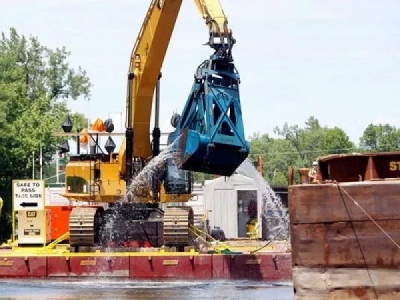
Posted on June 5, 2017
By Scott Fallon, lohud
General Electric Co. will not be required to remove more cancer-causing PCBs from the Hudson River in the near future despite calls from New York officials and other federal agencies to do so, U.S. Environmental Protection Agency officials announced Thursday.
EPA officials have determined that the dredging of 2.8 million cubic yards of polluted mud completed two years ago has reduced PCB levels in fish, though not yet to a level that they can be eaten safely. That won’t happen for another 15 to 30 years as PCB levels in fish are expected to drop very slowly, said Catherine McCabe, acting EPA regional administrator.
The PCB levels are where EPA officials expect them to be. McCabe said “the data, the science or the law” would allow the agency to compel GE to conduct more dredging.
“While the project was designed to set the river on a course for recovery, we have always explained that the recovery will take many years,” McCabe said. “It is not possible for the fish to fully recover immediately after the conclusion of dredging.”
Environmentalists say the dredging project fell short and EPA needs to reassess its goals for the river’s health.
“The evidence clearly shows the Hudson River remedy is not protective of human health and the environment and will not meet EPA’s goals,” said Paul Gallay, president of the Hudson Riverkeeper advocacy group. “EPA’s decision flies in the face of that evidence. Instead of moving the goal posts, EPA should try to meet its own goals by mandating additional remediation. We cannot accept an outcome that will leave Hudson River fish toxic for generations.”
From 1947 to 1977, more than 1 million pounds of PCBs were dumped into the river from two GE plants about 40 miles north of Albany. Ever since a key dam was demolished in the 1970s, PCBs have continually flowed 200 miles downriver to the shores of New Jersey and New York Harbor.
After opposing a cleanup for years, GE began a $2 billion project in 2009 and dredged almost 2.8 million cubic yards of polluted mud from a 40-mile stretch in upstate New York.
Before worked wrapped up in 2015, the National Oceanic and Atmospheric Administration and the U.S. Fish and Wildlife Service urged EPA to delay plans to dismantle a crucial cleanup facility in case more dredging of cancer-causing PCBs is needed.
EPA officials said in 2015 that they would likely not require GE to dredge areas of the Lower Hudson where the river comes in contact with New Jersey.
Source: lohud





